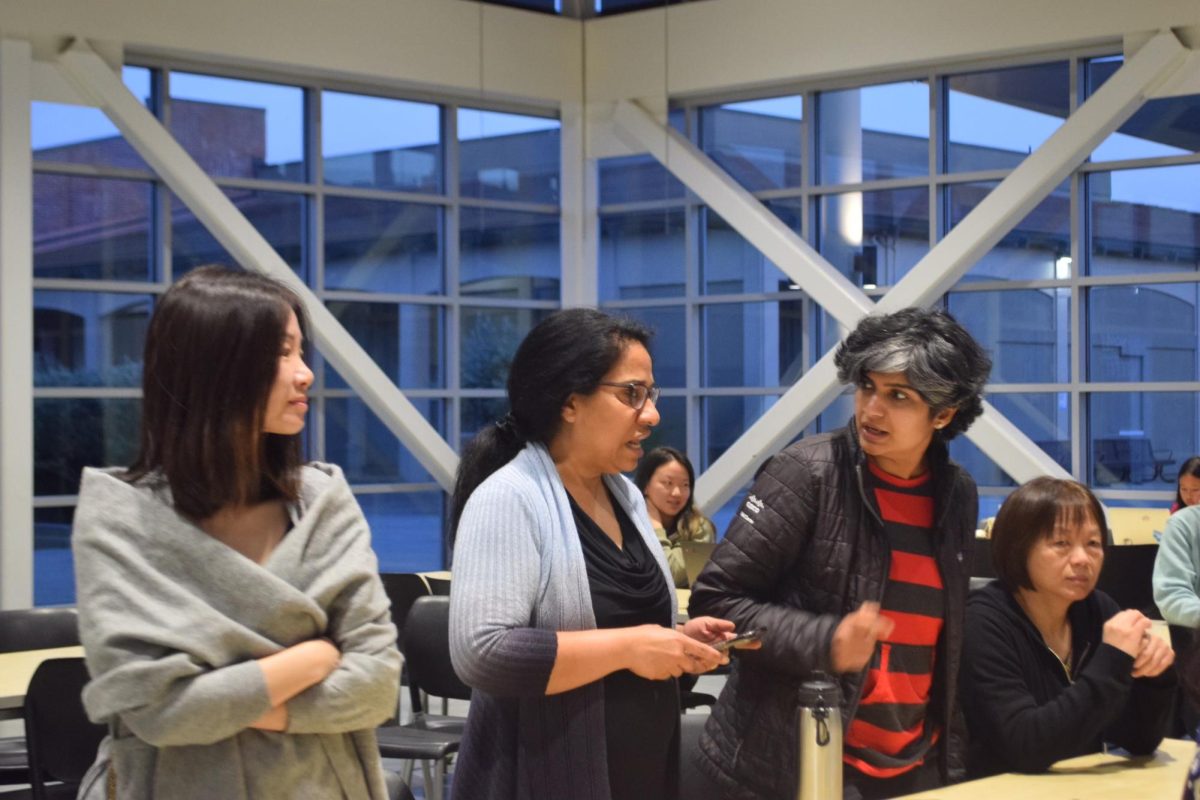
NASA astrophysicist Jeffrey D. Scargle stood in the front of B101 with a picture of a solar flare on the projector, the beginning of his talk on the “Dynamic Universe” for Science National Honor Society’s guest speaker meeting March 6. According to Scargle, the world of astronomy is now much different than it was even just 30 or 50 years ago, and he depicted the ever-changing movement of the universe when, with a click of the button, a frozen picture of a solar flare came alive with fiery waves.
With a title the “Dynamic Universe,” Scargle’s presentation focused on movement. The movement of solar flares, the movement of flares and waves on planets such as Jupiter, the movement of black holes and the proof of their existence. These were all shown through multiple videos that, at first glance, seem static at first, but with the push of a button, began to overwhelm the screen with their sudden burst of momentum.
“[With my presentation], I wanted to emphasize the impact astronomy has made in the last few decades,” Scargle said. “When you put it all together, what’s common to these discoveries are changes — things are not stable, planets and rocks aren’t are just floating along as we thought. The thrill of research is the unsolved questions.”
He took students through projects he was currently working on, detailing the mechanics behind one in particular, the Fermi Gamma-ray Space Telescope. Named after Enrico Fermi, a pioneer of high energy physics, the Fermi Gamma-ray Space Telescope was a telescope that measured the movement of planets through gamma rays, and a big part of Scargle’s job is to measure and analyze the data that comes from that telescope. It was a big project, involving groups all over the world — Italy, Japan, France, Germany andthe U.S. According to Scargle, it is the biggest computer in space.
SNHS stated in the beginning of the year they wanted to branch out to different fields beyond biology and chemistry, so with their speaker they hoped to explore astronomy and what opportunities it holds for SNHS members. Activities manager junior Grace Luo wanted to diversify the speakers the club brought on campus, as she found that a lot of their guest speakers tend to be from start ups or focus more on technology. Not that many students at MVHS were familiar with the field of astrophysics, so she filled out an outreach form at NASA requesting a speaker.
“I wanted members to know more about the field because a lot of people don’t have astrophysicists as parents, or they don’t interact with them daily,” Luo said. “You don’t really have any lab-oriented people coming over, and you very rarely have astrophysicist coming over, so I tried to ask a more diverse set of people to come [to MVHS].”
Scargle’s advice to future astrophysicists is that students need to be able to work hard, but it is also important to feel an attraction towards doing research. Astrophysics can be rewarding work, but sometimes efforts may take a long time to finally come to fruition. Work on the Fermi telescope, for example, took decades between when the idea was first hatched to when the telescope was first launched.
“You have to get an attitude that you are curious about the world,” Scargle said. “You want to know answers to big questions like ‘how long ago did the universe start?’, but also realize that you have to slug away at a problem for 10 or 20 years, work little details and wait for the pay off, maybe decades later. You have to be patient, you have to see the future where the payoff is going to come from this hard work.”







